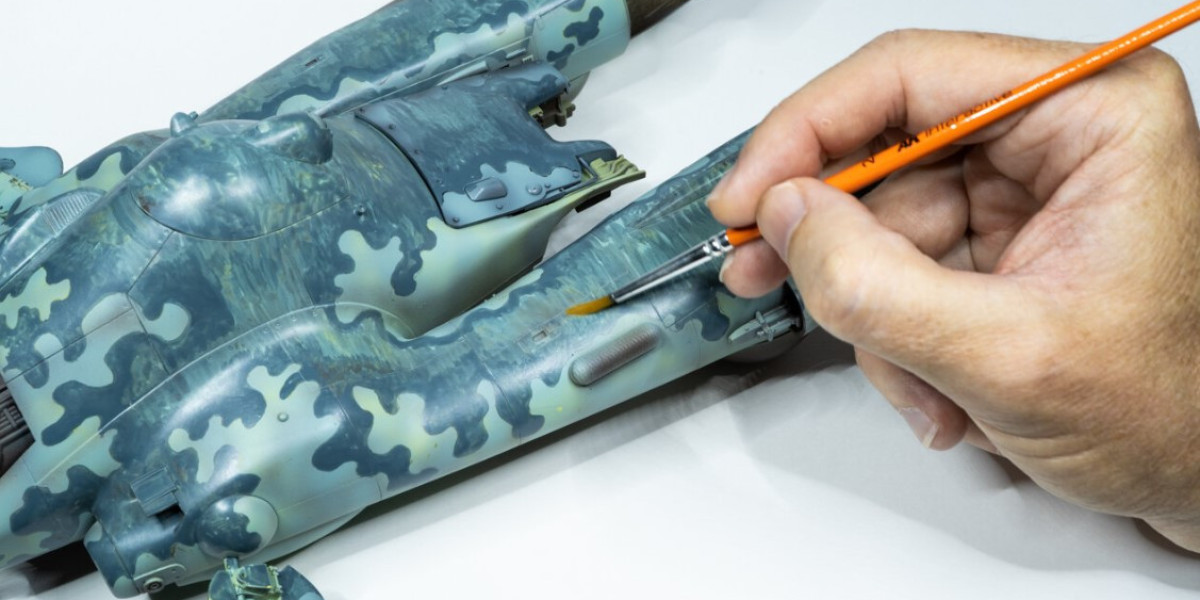Introduction to Painting Plastic Models
Painting plastic models can seem like a daunting task, but with the right techniques and tools, you can transform a plain model into a realistic masterpiece. Whether you're building scale models of planes, cars, or action figures, mastering the art of painting is key to bringing them to life. In this guide, we’ll walk you through the entire process—from preparation to the final touches—so you can paint plastic models like a pro.
Preparing Your Plastic Model for Painting
Before jumping into the fun part (painting), it’s essential to properly prepare your model. Skipping this step is one of the most common mistakes beginners make, leading to uneven paint finishes or peeling.
Cleaning the Model
The first step is to clean your model thoroughly. During manufacturing, plastic models often gather dust, oils from handling, or release agents, which can prevent paint from adhering properly. A simple wash with warm water and a mild detergent can do wonders. Make sure to dry it completely before moving on.
Priming the Surface
Priming your plastic model is crucial for achieving a smooth, long-lasting finish. Primer helps the paint adhere better to the plastic and creates an even surface to work on.
Choosing the Right Primer
Not all primers are created equal. best paint for plastic models, you’ll want to use a primer specifically designed for plastic surfaces.
How to Apply Primer Correctly
Applying primer is an art in itself. Too much primer can obscure the fine details of your model, while too little won’t create an even surface. Use thin, even coats, and keep the spray can or airbrush at least 6–8 inches away from the model. Allow it to dry fully before moving on to painting.
Selecting the Best Paints for Plastic Models
Choosing the right paint is just as important as the technique you use. The paint you select will affect both the durability and appearance of your model.
Acrylic Paints vs. Enamel Paints
When it comes to plastic models, acrylic and enamel paints are the most popular options. Acrylic paints are water-based, dry quickly, and are easy to clean up. They’re also less toxic, making them ideal for indoor use. Enamel paints, on the other hand, are oil-based, offer a smoother finish, and are more durable. However, they take longer to dry and require special solvents for cleaning.
Specialty Paints for Plastic Models
Some hobbyists prefer using specialty paints designed specifically for plastic models. Brands like Gunze Sangyo and Mr. Hobby offer a wide range of colors tailored to various types of models, ensuring accurate and professional results.
Essential Tools for Painting Plastic Models
You can’t paint like a pro without the right tools. Here's a list of essentials you'll need.
Brushes, Airbrushes, and Paint Palettes
A good set of brushes is essential for hand-painting, especially for small details. For larger areas or base coats, an airbrush provides a smoother, more even finish. You’ll also need a paint palette to mix your colors effectively.
Masking Tape and Other Accessories
Masking tape is perfect for creating sharp, clean lines when painting different sections of your model. Other handy accessories include toothpicks for detail work and tweezers for placing small decals.
Mastering Painting Techniques for a Professional Finish
To achieve that professional-grade finish, it's important to master a few key techniques.
Base Coating and Layering Techniques
The base coat sets the foundation for your model. Start with a thin, even layer of paint, and then build up the color gradually. Layering helps you create depth and realism in the final result.
Dry Brushing for Highlighting
Dry brushing is a technique where you use a nearly dry brush with minimal paint to highlight the raised edges of your model. This adds depth and dimension, making your model appear more lifelike.
Washing and Weathering Techniques
Washing involves applying a diluted, darker shade of paint into the crevices to enhance details. Weathering techniques, like rust and dirt effects, can make your model look aged and more realistic.
The Importance of Detailing
Once your base coats are done, it’s time to add the finer details that really make your model stand out.
Adding Decals and Transfers
Decals can add an extra layer of realism to your model. Whether it's insignias or numbers, decals should be applied carefully using a decal softener to ensure they blend seamlessly into the paint.
Fine Detailing with a Small Brush
For the finest details, such as panel lines or cockpit controls, use a very small brush. Patience is key here—small, steady strokes will yield the best results.
Protecting Your Painted Model
After putting in all this work, you’ll want to protect your masterpiece from chips and scratches.
Applying a Clear Coat for Protection
A clear coat acts as a protective layer over your paint job. You can choose between matte, satin, or gloss finishes depending on the look you want.
Matte, Satin, and Gloss Finishes
Matte finishes give a more subdued look, while gloss finishes make colors pop. Satin offers a balance between the two, providing a slight sheen without being too shiny.
Storing Your Model Properly
Proper storage is essential to keeping your model in top condition. Keep it in a dust-free environment, and consider using a display case for protection.
Common Mistakes to Avoid When Painting Plastic Models
Skipping the primer: Without priming, your paint may not adhere properly.
Using too much paint: This can obscure details. Thin, even coats are always best.
Rushing: Patience is key. Take your time to let each layer dry before moving on.
Final Touches for a Professional Look
Once you’ve completed painting, consider sealing your work with a final coat of clear varnish to lock in your details and protect the paint.
Sealing and Displaying Your Model
Whether you display your model in a diorama or a simple case, sealing it with a clear coat ensures that all your hard work is preserved.
Conclusion: Perfecting Your Plastic Model Painting
Painting plastic models is a rewarding hobby that allows you to bring your creations to life. With the right tools, paints, and techniques, you can achieve a professional finish that will impress anyone who sees your work. Just remember to be patient, take your time, and practice the techniques until you master them.
FAQs
What’s the best paint for plastic models?
Acrylic paints are great for beginners due to their ease of use, while enamel paints offer a more durable finish.Can I paint plastic models without priming?
While it's possible, priming your model first will give you a smoother, more professional finish.How do I prevent brush strokes from showing?
Use thin coats and a soft brush to minimize visible brush strokes.
Our Social Pages:
https://plastic-models-store.com/
https://www.facebook.com/plastic.models.store
https://www.instagram.com/plastic_models_store/
https://www.youtube.com/channel/UCKpiM8Q6k2XjOwN9lW0fOrw








